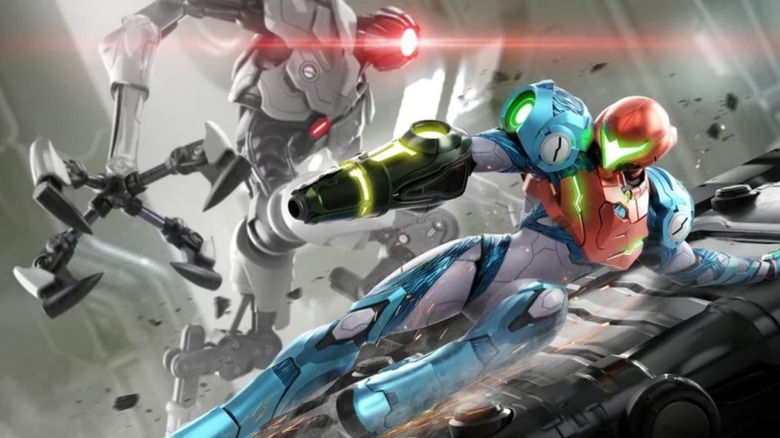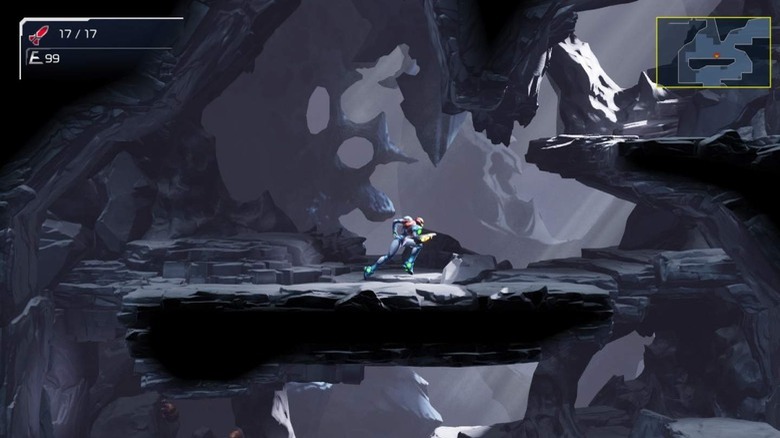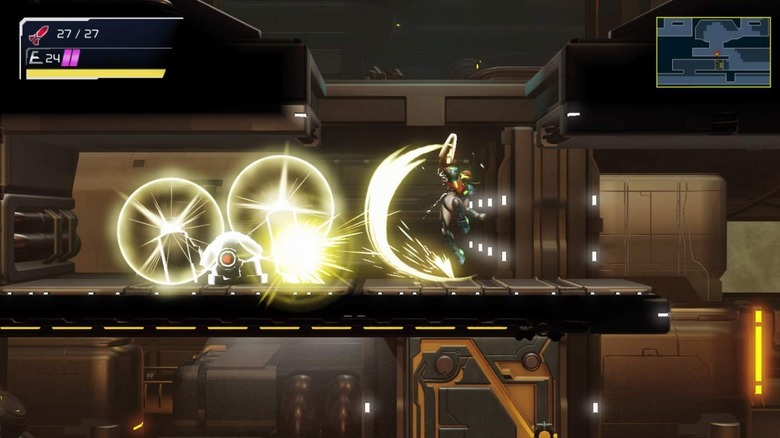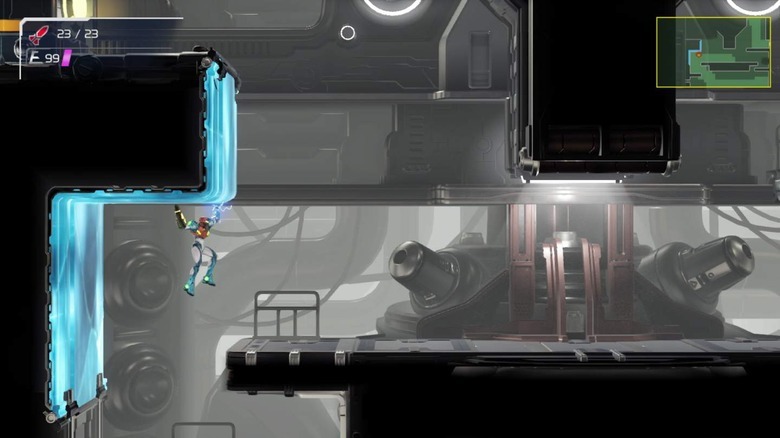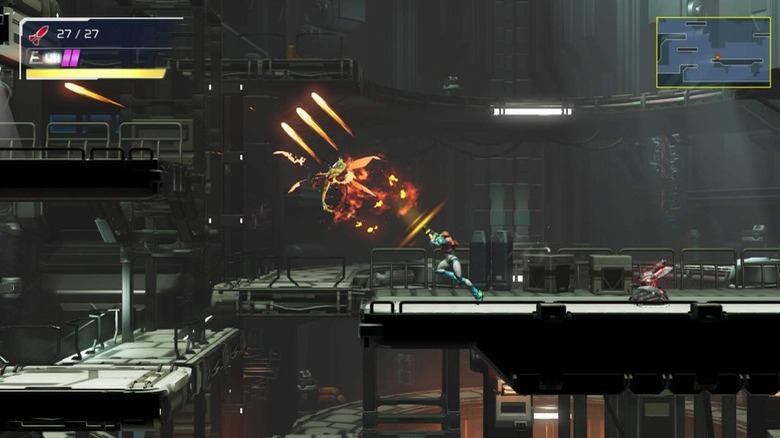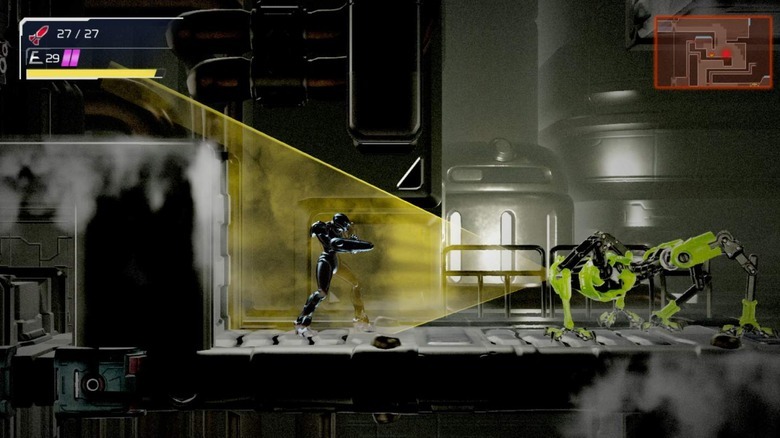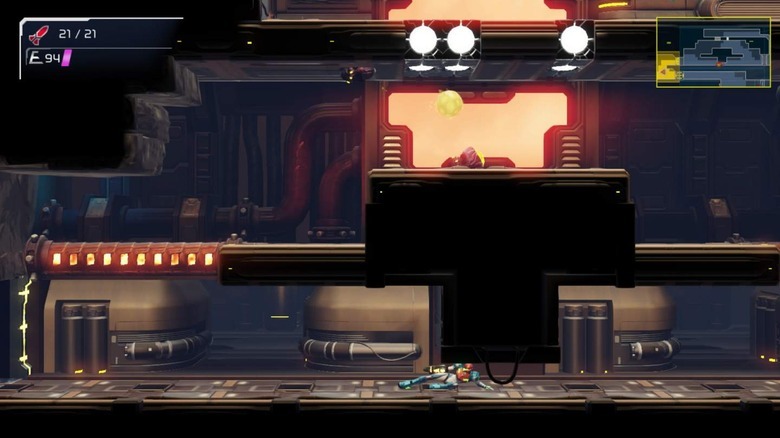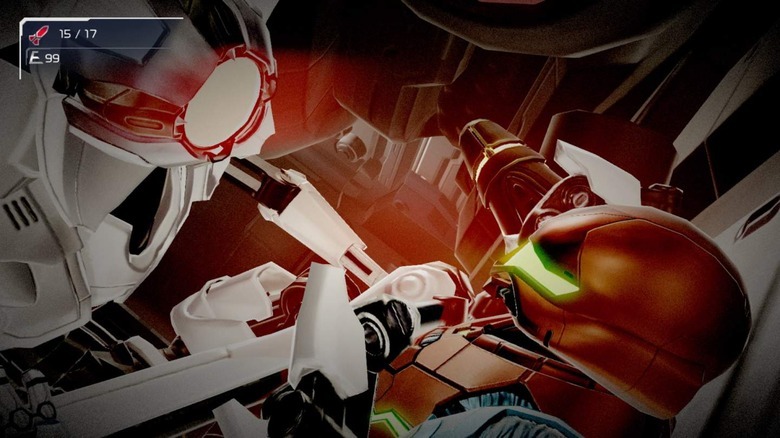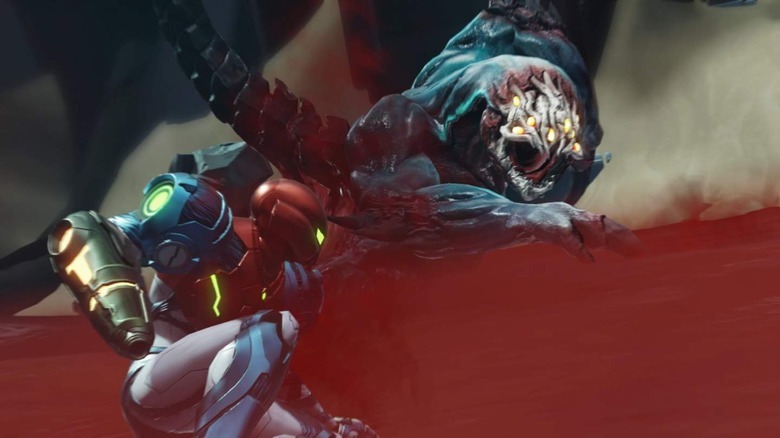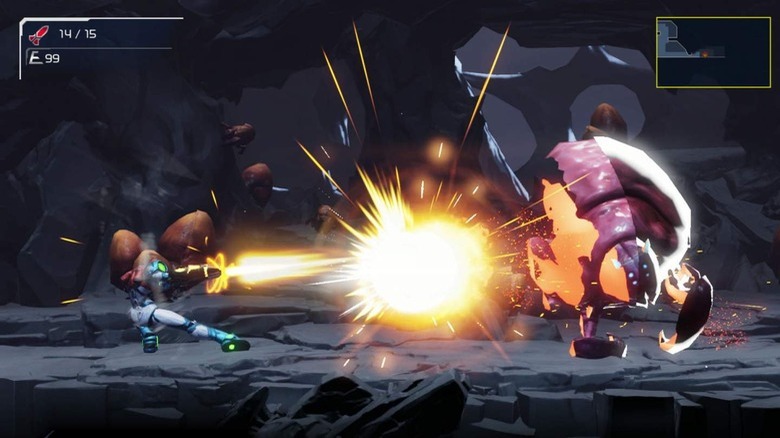Metroid Dread Review
- Wonderful gameplay; the 2D Metroid we know and love
- Has a great feeling of speed
- Surprisingly difficult between boss fights and EMMI encounters
- Story is told in a few, exposition-heavy segments
- Frame drops present in some areas of the game
It's been far too long since the last truly new 2D Metroid game. To find it, we have to go back nearly 20 years to the release of Metroid Fusion for the Game Boy Advance. In the time since then, we've had the excellent Metroid Prime trilogy and a pair of 2D remakes in Metroid Zero Mission and Metroid: Samus Returns, but those who were looking for a new 2D adventure had to wait until this year with Metroid Dread. In short: Metroid Dread is a game that's been a long time coming, and now that it's here, it has to measure up to the other games in the Metroid series, which is no small task.
Thankfully, Samus hasn't lost any of her bite in the intervening 19 years. A short diversion into the 3D world for the Metroid Prime trilogy, a couple of revisits to past adventures, and now Metroid proper is back. Even though Metroid Dread was revealed just a few months before it was ultimately released, the game had a lot of hype to live up to since it's now the new torchbearer for the classic Metroid series. It manages to live up to that hype and, in some cases, even exceed it as well.
Design and Narrative
Metroid Dread will feel instantly familiar to anyone who has played a 2D Metroid game before. For that matter, it'll feel familiar to anyone who has ever played a non-linear platformer, otherwise known as a "Metroidvania" title. "Metroidvania" is the colloquial term for games made in the same vein as Metroid or Castlevania. These action-adventure games are defined by their large, secret-filled maps that start by limiting exploration and then open up as players explore and obtain new abilities, items, or weapons.
Boiled down to its essential gameplay loop, when you first start in Metroid Dread, much of the map will be inaccessible to you. As you play, you will unlock new areas of the map and gain entry to those previously-inaccessible areas thanks to the abilities you'll obtain. Barring sequence breaks – some of which have already been discovered – it isn't until the game's later stages that the entire map will be fully accessible to players.
There have been countless games that have followed in the footsteps of Metroid and Castlevania throughout the years. Hollow Knight, Ori and the Blind Forest, Axiom Verge, Guacamelee, and Bloodstained are all modern examples of Metroidvania titles that have enjoyed positive reception. Metroidvania games are some of my favorites, and so to finally have a new Metroid after so many years is an exciting thing indeed.
Metroid Dread picks up shortly after Metroid Fusion ends. The Galactic Federation has found evidence of the X-parasite's existence on Planet ZDR and sends EMMI robots to deal with them. Shortly after the EMMI arrive on ZDR, they lose contact with the Federation, which in turn sends Samus in to investigate and figure out why.
Without diving too much into the realm of story spoilers, those EMMI have been corrupted by what they encountered on ZDR, and when Samus arrives, she learns that they are hunting her. While the story does have some significant revelations for those who have followed the Metroid narrative so far – particularly those who played Metroid Fusion – we won't get into those here.
While most people probably don't play Metroid games for grand storytelling, there is a story to experience here, and while it's good enough, it's relatively sparse. There aren't many other characters on Planet ZDR, and the ones you meet can often feel like exposition dispensers who exist primarily to give you background. The story picks up in the later stages, to the point of being engaging, but I wouldn't have minded a little more along the way.
It isn't necessary to play other games in the series before playing Metroid Dread, though knowledge of past games in the franchise will certainly give better context for some of the events in Dread. Interestingly enough, once players take the reins as Samus in Metroid Dread, they don't have any other mission objective except to survive the dangers of ZDR and make it back to their ship alive, a chilling directive indeed.
Metroid Dread Gameplay
Surviving is easier said than done. Upon arrival on ZDR, a narrative event finds a way to strip Samus of her powers and abilities, and it's up to players to explore the planet to find the tools they need to get back to the surface. Right away, the Metroid feel is present, though Metroid Dread feels faster than Metroid games I've played in the past. Maybe I just haven't played a proper Metroid title in a long time, but Samus feels like she really moves in this game.
Samus, of course, has many of the abilities she's had in previous games. From the start, she can shoot her arm cannon, fire missiles, run, jump, and slide, but throughout the game, you'll unlock an entire slate of abilities, both new and old. I don't want to spoil too many of those here because the joy is in discovering them, but rest assured that plenty of old favorites return.
You'll also be able to increase Samus's health and max missile count by finding energy and missile tanks dotted throughout the map. These comprise many of the secrets you'll find, and by the end of the game, I had hundreds of health and could carry more than 150 missiles. I never felt like I wanted for missiles as I was playing Metroid Dread, but I imagine that's because I didn't use them nearly as often as I should have.
I have a good reason for that, however, and it's the melee counter. Like in Samus Returns for the 3DS, Samus can parry certain enemy attacks with a melee counter. Enemies will flash briefly when they're about to make an attack that can be countered, and successfully countering opens up a window for an instant-kill attack of your own (or at least it's instant-kill in most cases). Dispatching opponents this way also seems to drop more health and missiles than usual, so you want to kill enemies off a melee counter when you can.
The map in Metroid Dread feels very well designed, with secrets to find everywhere. In the game's opening stages, it can be a little frustrating to realize just how limited your exploration is, but that leads to numerous "aha!" moments as you unlock new abilities and remember the places they'll allow you to explore.
That's part of the joy of playing a game like this, and even though there will be places where you'll get stuck as you play Metroid Dread, that's only ever a temporary thing. I have to strongly recommend against looking up solutions when you're stumped. Instead, shoot walls, explore someplace else for a little while, or even just put the game down and come back to it fresh later. It's so much more rewarding to figure things out for yourself in Metroid Dread, especially after you've been stumped and feel like you can't progress.
You are never truly stuck in this game; there were multiple instances where I couldn't figure out what I needed to do to progress, only to come back later and figure out a way forward almost instantly after putting Metroid Dread down for a while.
Metroid Dread is also a challenging game, particularly when it comes to boss fights and the various EMMI zones you'll have to navigate. Under normal circumstances, EMMI can't be killed, which means that when you're making your way through an EMMI zone, you have to be careful to avoid detection. If you're discovered, your only recourse is to run and hope the EMMI loses you, because while EMMI have a lock on your position and are in full pursuit, the exits from their zones are locked.
If an EMMI catches you, you have a chance to escape, but it requires split-second timing and is not something most players will want to count on. Essentially, being discovered becomes a do-or-die situation where you either find some way to lose the EMMI that's hunting you, or you're quickly-yet-brutally dispatched.
It is far better not to get caught than it is to hope you can time an escape perfectly, and that really drives home the notion that this is a desperate situation for a hopelessly outmatched Samus. EMMI Zones add a lot of tension that would be missing from the game without them, and the first time you're being chased through a zone by an EMMI, the reasoning behind naming this game "Metroid Dread" becomes crystal clear.
Many of the boss fights in this game are fantastic tests of pattern recognition and timing, and for the average player, most of them will take multiple attempts to complete. Even basic enemies pose a threat in the early stages of Metroid Dread, though that changes somewhat as you progress further and unlock new abilities.
Metroid Dread does an excellent job of making you feel like a butt-kicking bounty hunter one moment before cutting you down and reminding you that you aren't the top dog on Planet ZDR the next. My initial thought is that Metroid Dread is probably a little too difficult for children, but on the other side of that coin, I know some kids who are savants with a controller and would love to turn this game inside-out.
Metroid Dread verdict
I love pretty much everything about this game. I love the feeling of speed present in pretty much every aspect of the title, and I love that there's a good challenge to be found here. I love the satisfaction that comes with being stuck and discovering the way forward. I love getting rolled by bosses and slowly perfecting the fight as I get better at recognizing the opponent's telegraphs and timings.
Metroid Dread is a very satisfying game to play, and it's one of those games where I feel compelled to go back and discover all the secrets I missed so I can have a save file that shows 100% completion. I have very few complaints, other than the fact that your limited interactions with other characters tend to be pretty exposition-heavy. Unfortunately, players will also encounter some framerate drops as they play, so Metroid Dread seems to be another title that pushes Switch to the limit.
Beyond those complaints, there's a lot to be excited about here. The graphics are solid, the map is a blast to explore, the combat is fun, and the core gameplay loop is as good as it's ever been.
Moreover, I'm excited about this game's future. Like many of its predecessors, it's evident from the moment you boot up Metroid Dread that it's going to make for an exciting speedrun, and I look forward to seeing how the routes through this game are refined in the months and years to come.
Along with Super Mario Odyssey, The Legend of Zelda: Breath of the Wild, and Fire Emblem: Three Houses, I count Metroid Dread as one of the essential games for Nintendo Switch. I am convinced that most players will find Metroid Dread instantly engaging, from Metroidvania newbies to those who have been fans of the sub-genre since the very first Metroid released on NES in 1986. Metroid Dread is a stellar return to form for the series, so here's hoping we don't have to wait another 19 years for a proper follow-up.
